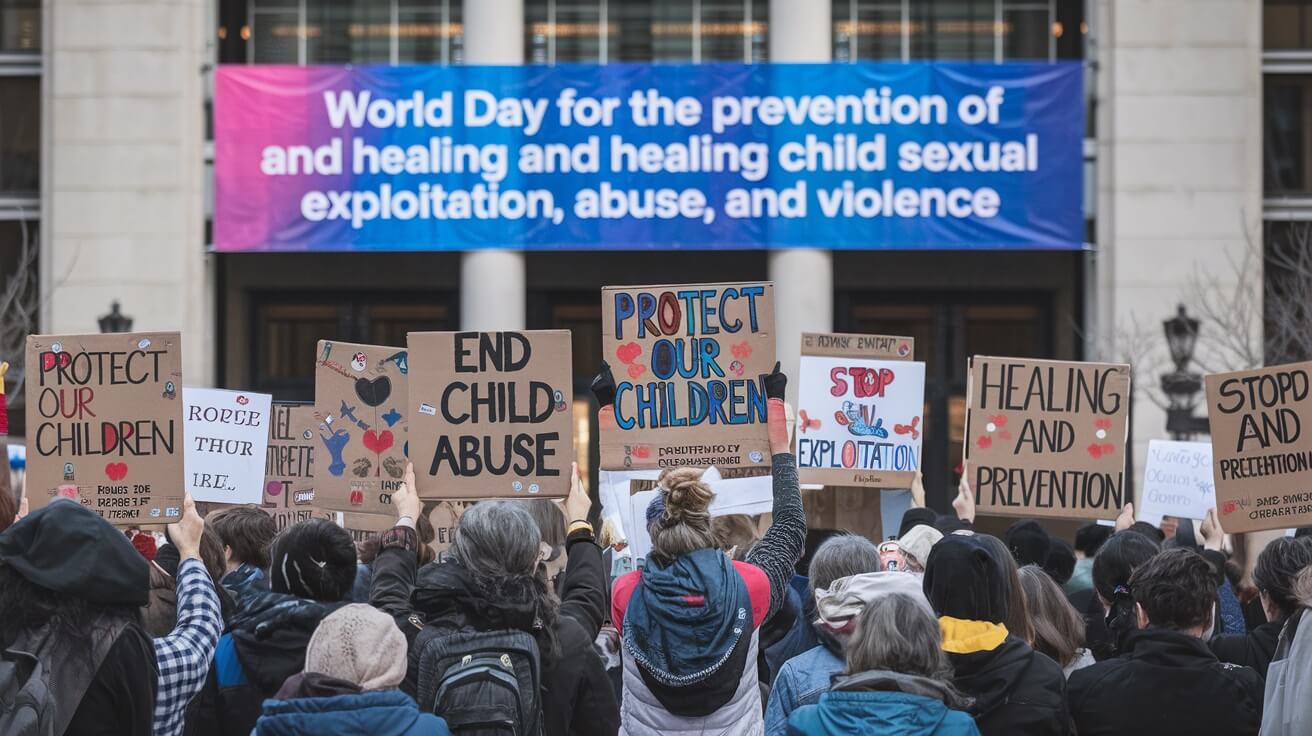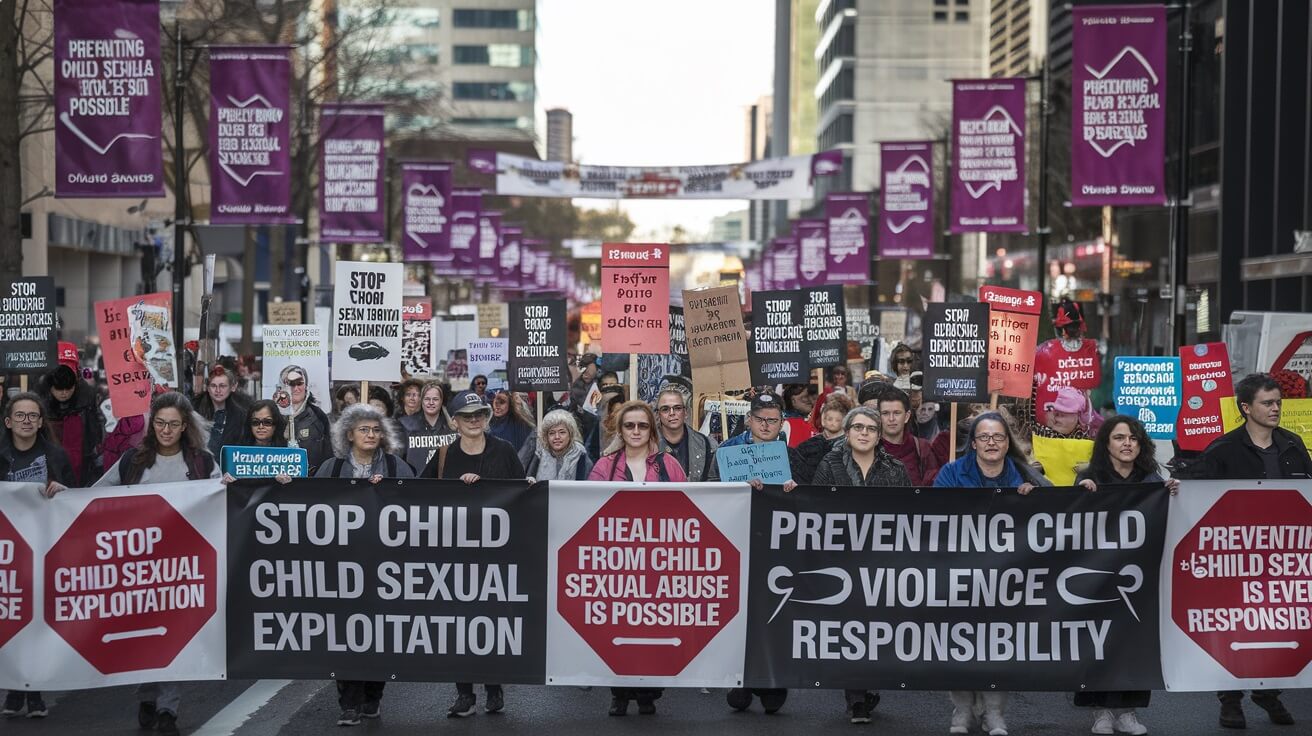
World Day for the Prevention of and Healing from Child Sexual Exploitation, Abuse, and Violence
Child sexual exploitation, abuse, and violence are heart-wrenching issues that affect millions of children worldwide. Despite growing awareness, these problems persist due to stigma, fear, and systemic failures. The World Day for the Prevention of and Healing from Child Sexual Exploitation, Abuse, and Violence is a critical reminder of the collective responsibility to protect vulnerable children and provide resources to help survivors rebuild their lives.
This article explores the root causes of child exploitation, the steps we can take to prevent it, and the pathways to healing for survivors. It’s a call to action for all of us—parents, educators, policymakers, and individuals—to play a part in creating a safer and more compassionate world for children.
What Is Child Sexual Exploitation, Abuse, and Violence?
Child sexual exploitation occurs when children are manipulated or coerced into activities that harm their physical and emotional well-being, often for the benefit of perpetrators. This can range from trafficking and pornography to direct abuse. Abuse and violence take many forms—physical, emotional, and sexual—often leaving survivors with lifelong trauma.

Global Impact
The statistics paint a grim picture:
-
Around one in every four girls and one in thirteen boys worldwide face sexual abuse at some point during their childhood, often before reaching the age of 18.
-
Over 70% of cases remain unreported due to fear and societal stigma.
-
UNICEF highlights that child trafficking for sexual exploitation is a multi-billion-dollar illegal industry.
Root Causes
-
Poverty: Economic hardship often forces families to make desperate decisions, putting children at risk.
-
Social Stigma: Fear of judgment silences victims and emboldens offenders.
-
Weak Systems: Inadequate enforcement of child protection laws allows perpetrators to escape justice.
Real-life example: Anita, a survivor from a rural community, was exploited by someone she trusted. With no nearby support systems, it took years for her to speak out, underscoring the need for accessible resources.
The History and Purpose of This Day
Origins
The United Nations established this day to unite global efforts in eradicating child exploitation and providing healing resources for survivors. It symbolizes hope and resilience, reminding us of our collective responsibility.
Goals
-
Raise Awareness: Spread knowledge about the dangers of child exploitation.
-
Promote Prevention: Advocate for education and protective measures.
-
Provide Support: Create resources for survivors to heal and rebuild their lives.
Organizations Leading the Fight
-
UNICEF: Drives campaigns to protect children’s rights worldwide.
-
ECPAT International: Focuses on eradicating child trafficking and exploitation.
-
Save the Children: Provides holistic support to abuse survivors.
Recognizing the Warning Signs
Common Indicators
Knowing the signs of child abuse can save lives. Here are a few:
-
Behavioral Changes: Sudden withdrawal, mood swings, or unexplained aggression.
-
Physical Marks: Bruises, burns, or frequent injuries with unclear explanations.
-
Emotional Distress: Unusual fearfulness, anxiety, or distrust of specific people.
How to Approach Victims
Approaching a child who may be experiencing abuse requires sensitivity:
-
Speak calmly and ensure they feel safe.
-
Avoid judgment or leading questions.
-
Offer assurance that it’s not their fault, and that help is available.
Why Early Detection Matters
Early intervention can prevent further harm and connect children to the necessary psychological and legal support systems.
Prevention Strategies
Community Awareness Campaigns
Community-led initiatives play a pivotal role in preventing child exploitation. Workshops, educational programs, and open discussions about abuse can empower families and children with knowledge.
Example:
In Kenya, a grassroots campaign involving schools and churches reduced child abuse cases in a rural region by 30%. This success demonstrates the power of community action.
Role of Schools and Parents
Schools:
-
Introduce lessons on body autonomy and safe boundaries.
-
Train teachers to identify and report signs of abuse.
Parents:
-
Build trust with children, encouraging open conversations.
-
Monitor children’s online activities to protect against digital exploitation.
Legal Protections and Policies
More vigorous enforcement of child protection laws is critical. Advocacy for mandatory reporting, child-friendly courts, and international cooperation can create a safer world for children.
Healing and Support for Survivors
Therapeutic Approaches
Healing from abuse takes time and a multidisciplinary approach:
-
Cognitive Behavioral Therapy (CBT): Helps survivors manage and reframe harmful thoughts.
-
Group Counseling: Creates a sense of community and shared healing.
-
Art and Play Therapy: Offers non-verbal ways for children to express their emotions.
Real-Life Resilience
Maria, a trafficking survivor, shared how therapy and support from a local NGO helped her regain confidence. Her story reminds us of the importance of accessible rehabilitation services.
Role of Society
Communities can support survivors by:
-
Offering safe spaces for discussion.
-
Advocating for accessible mental health resources.
-
Combating stigma through education.
How You Can Help
Individual Actions
-
Report Suspicions: If you suspect abuse, contact local child protection agencies.
-
Volunteer: Join organizations working to prevent exploitation and support survivors.
-
Educate Yourself: Learn about child rights and how to spot warning signs.
Join Global Efforts
Participate in awareness events, fundraisers, or online campaigns that amplify the importance of this day.
Advocate for Change
Push for legislative reforms that enhance child protection frameworks. Start by signing petitions, contacting policymakers, or joining advocacy groups.
Conclusion
Preventing child exploitation is not just the responsibility of governments or organizations—it’s a shared duty. Every small action contributes to a more significant, more impactful movement.
Whether you educate yourself, speak up, or support survivors, your actions matter. We can create a future where every child feels safe, valued, and heard.
Key Takeaways
-
Child exploitation affects millions globally, yet many cases remain unreported due to stigma.
-
Recognizing warning signs and providing immediate support can save lives.
-
Community involvement and legal reforms are critical to prevention.
-
Healing for survivors requires emotional, societal, and psychological support.
-
You have the power to contribute by raising awareness, advocating for policies, and supporting global efforts.
FAQs
What is the goal of this awareness day?
The goal is to increase understanding of child sexual exploitation while fostering efforts toward prevention and providing support for healing.
How can I identify signs of abuse?
Look for sudden behavioral changes, unexplained injuries, and emotional distress.
What resources are available for survivors?
Survivors can access therapy, counseling, and support groups through organizations like UNICEF and local NGOs.
How can communities prevent child exploitation?
Organize educational workshops, promote open dialogue, and advocate for stronger laws.
How do I report suspected abuse?
Contact local child protection services or helplines like Child Helpline International.
International Days and Weeks




